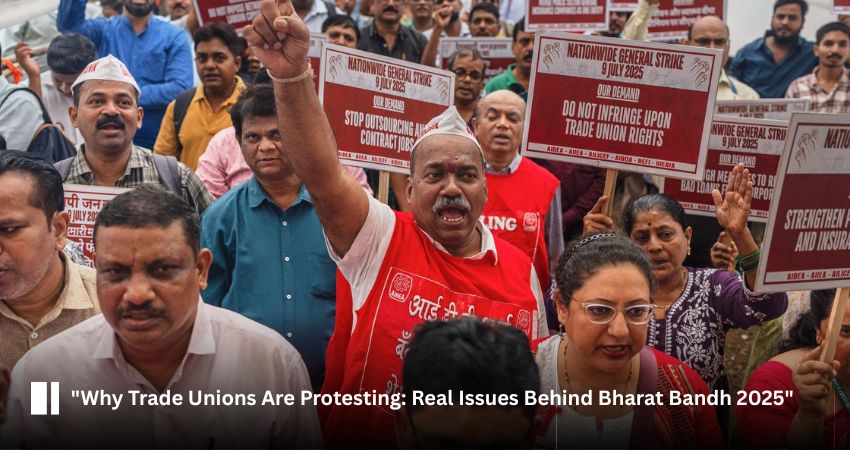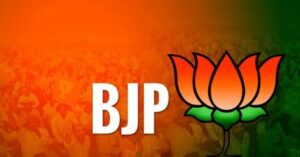Why Trade Unions Are Protesting: Real Issues Behind Bharat Bandh 2025
Build Your Website in Minutes with One-Click Import – No Coding Hassle!

Sure! Below is a 1500-word in-depth SEO-optimized article titled:
Introduction
The Bharat Bandh 2025 has once again brought India to a standstill as millions of workers across sectors participate in a nationwide strike. The coordinated protest, led by major trade unions and supported by farmers’ bodies and civil society groups, reflects deep-rooted frustrations over economic policies, labor reforms, privatization, and social security concerns.
In this article, we will explore the real issues behind Bharat Bandh 2025, analyze why trade unions are protesting, and break down the economic and social context that has triggered one of the largest strikes in recent years.

What Is Bharat Bandh 2025?
Bharat Bandh literally means “India Shutdown.” It is a form of mass protest where normal economic and public activities come to a halt due to a nationwide strike. The Bharat Bandh 2025, held on [insert specific date], saw participation from over 10 central trade unions, with support from farmers’ organizations, student bodies, and political parties.
This isn’t a one-off protest. It is a culmination of several years of unrest, as the working class continues to push back against policies they perceive as anti-labor, anti-poor, and pro-corporate.
Top Trade Unions Behind Bharat Bandh 2025
The protest was spearheaded by central trade unions, including:
- Centre of Indian Trade Unions (CITU)
- All India Trade Union Congress (AITUC)
- Indian National Trade Union Congress (INTUC)
- Hind Mazdoor Sabha (HMS)
- Self-Employed Women’s Association (SEWA)
- All India United Trade Union Centre (AIUTUC)
These unions represent millions of workers across agriculture, banking, railways, public sector enterprises, healthcare, education, construction, and manufacturing.
Real Issues Behind Bharat Bandh 2025
1. Labor Law Reforms and the New Labor Codes
One of the core reasons behind the Bharat Bandh 2025 is the implementation of four new labor codes:
- Code on Wages
- Industrial Relations Code
- Social Security Code
- Occupational Safety, Health and Working Conditions Code
Why are trade unions protesting these codes?
- Dilution of workers’ rights: The codes reduce bargaining power of trade unions and make it easier for companies to hire and fire workers.
- Fixed-term employment: Encourages contractual work over permanent employment, affecting job security.
- Compromise on safety standards: Workers claim that the Occupational Safety Code lowers safety compliance for small factories.
- Union formation hurdles: Stricter thresholds make it difficult for workers to legally form trade unions.
While the government claims these codes will improve ease of doing business, unions argue they are a major setback for labor rights.
2. Privatization of Public Sector Undertakings (PSUs)
A major flashpoint is the aggressive privatization drive. The government has announced strategic disinvestment in multiple sectors, including:
- Railways
- Banking and Insurance
- Oil and Gas
- Steel and Defense Manufacturing
- Airports and Ports
Why are workers protesting PSU privatization?
- Job losses: Privatization often leads to layoffs, especially of non-permanent workers.
- Exploitation risk: Private firms may exploit cheap labor and ignore safety norms.
- National assets at stake: Workers believe PSUs are built using taxpayers’ money and should remain in public hands.
Bank employees, railway unions, and defense sector workers have been particularly vocal against this move.
3. Low Wages, Unemployment, and Informal Work
Despite claims of economic growth, India faces a jobless recovery. Key concerns include:
- High unemployment rate: As of early 2025, India’s unemployment rate hovers around 8-9%, with youth unemployment even higher.
- Wage stagnation: Inflation-adjusted wages in both rural and urban areas have not kept up.
- Informal sector dominance: Over 90% of India’s workforce is in the informal sector with no social security, job security, or fixed income.
Trade unions are demanding:
- A national minimum wage of ₹26,000 per month
- Regularization of contract workers
- Unemployment allowance for jobless youth
4. Farmers’ Solidarity and Rural Distress
Bharat Bandh 2025 is not just about urban labor. It has deep connections with agrarian distress.
Why are farmers supporting the bandh?
- Unmet demands from previous protests (like the 2020–21 Farmers’ Protest)
- Lack of MSP guarantee law
- Skyrocketing input costs (diesel, fertilizers)
- Loan waivers and insurance frauds
Rural workers and small farmers, often marginalized and underpaid, form the backbone of India’s economy. Their joint action with trade unions shows the unity of working classes across sectors.
5. Dilution of Social Security Schemes
Trade unions are also opposing:
- Cuts in welfare schemes like MGNREGA and public health budgets
- Slow implementation of ESIC and EPFO coverage for informal workers
- Delay in pensions and lack of universal social security
Workers, especially in the construction, domestic work, and gig economy, are demanding comprehensive protection under the social security code.
Government Response to Bharat Bandh 2025
The central government has labeled the bandh as politically motivated and reiterated its commitment to labor reform and economic liberalization.
Key government positions:
- Labor codes are aimed at creating formal jobs and attracting foreign investment
- Privatization is necessary for reviving inefficient PSUs
- Welfare schemes are being digitized and expanded to include gig workers
However, critics argue that these measures favor corporates at the cost of common workers.
Role of Political Parties
Opposition parties including Congress, Left parties, AAP, TMC, and regional outfits have extended support to the Bharat Bandh. Their support has given the protest national visibility, but also raised concerns about political polarization.
Impact of Bharat Bandh 2025
Economic Impact:
- Banking services hit in several states
- Transport services disrupted in major cities like Delhi, Mumbai, Kolkata, and Bengaluru
- Factory operations stalled in many industrial hubs
- Retail trade saw massive shutdowns in solidarity
Social Impact:
- Wider public awareness about worker and farmer issues
- Media coverage brought attention to rural and industrial distress
- Civil society mobilization across campuses, NGOs, and trade bodies
What Workers Are Demanding – Key Charter of Demands
- Withdraw labor codes
- Stop PSU privatization
- Guarantee minimum wage
- Ensure job security and equal pay
- Expand social security to all workers
- MSP guarantee law for farmers
- Strengthen public sector jobs
- Unemployment support for youth
The Bigger Picture: Class Solidarity in India
Bharat Bandh 2025 isn’t just a protest—it’s a reflection of class consciousness. In a time of widening inequality, with the top 1% owning more than 40% of wealth, the working class is rising to demand:
- Fair share of economic growth
- Dignified livelihoods
- Right to organize and protest
The bandh symbolizes unity between urban labor, rural workers, and farmers—a coalition that could shape India’s political and economic future.
Conclusion
The Bharat Bandh 2025 is not merely a disruption—it is a cry for justice from India’s workers and farmers. The protests highlight systemic issues in labor policies, privatization strategies, social protection, and employment generation.
For India to move forward inclusively, policymakers must listen to the voices on the ground—those who build, feed, and sustain the nation. Real reforms must ensure that economic development does not come at the cost of dignity, equity, and justice for its working people.



